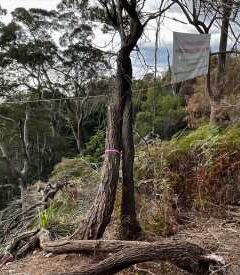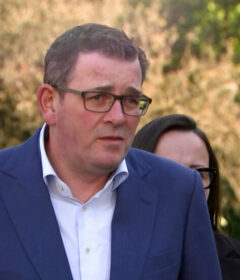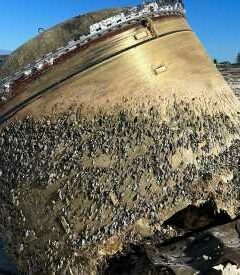Home » Australasia »
Australia’s Opportunities and Challenges on the Path to ‘Net Zero’
The Australia Letter is a weekly newsletter from our Australia bureau. This week’s issue is written by Natasha Frost, a reporter in Melbourne.
What does the transition to a zero-emissions future look like for Australia? This is the topic of “Powering Up: Unleashing the Clean Energy Supply Chain,” a new book by Alan Finkel, the former Australian chief scientist, released this week.
Alan spoke to The Times about what lies ahead. This interview has been lightly edited and condensed.
Natasha: In your book, you describe some of the opportunities for Australia on the pathway to electrification. Could you tell me more about that?
Alan: We have an opportunity to become an electro-state of the future. We’re in the process of exiting the age of big oil, and going into the age of big shovels, to quote Daniel Yergin.
There are two ways Australia can contribute to the future zero-emissions economy: One is through providing resources, and the other is through shipping sunshine.
The transition to zero-emissions energy to replace all of our fossil fuels is going to require a huge amount of resources, including copper and aluminum. We’re also going to have to massively ramp up battery materials, like lithium, nickel, manganese, cobalt and graphite, and rare earth elements, which Australia has a lot of.
Then there’s what I call “shipping sunshine.” In a future where we have weaned ourselves off coal, oil and gas and replaced it with zero-emissions electricity and zero-emission hydrogen, energy still needs to be traded. There’ll be countries that don’t have the land for the solar power, and don’t have a suitable wind resource, and they’ll need to import energy.
If we take solar, wind and hydroelectricity and use that to split water to get hydrogen, and then ship either the hydrogen or a derivative of hydrogen such as ammonia, we’re now shipping a chemical that can be imported into other countries and used as an energy source.
Is Australia already successfully capitalizing on its resources?
We have to invest in adding value to what we export. For 20 or 30 years, people have complained that we don’t add value and we have a “dig to ship” mentality. Realistically, there’s never been a financial case for doing more than that because the raw products we sent out, such as nickel ore or iron ore, have just been more economically processed in other countries.
But things are changing now, because of the imperative to decarbonize — so we have an opportunity to produce decarbonized products by adding value to our resources on the ground.
You describe a growing demand for products that are both greener and more ethically produced — which are usually also more expensive. What makes you think this will matter enough to consumers to outweigh the costs?
Take European car manufacturers as an example. They are concerned about the ethics, as well as the environmental impact. Increasingly, they’re looking to buy their materials knowing that they’ve got a low-emissions profile at the mining and refining stages. There’s also a lot of concern about cobalt from ethically compromised nations: BMW, for example, has decided to only buy cobalt from mines in Morocco or Australia.
This is what I called purchasing power: customers ensuring that what they get has been done with low emissions, and through ethical and responsible mining and refining. We can check all the boxes, but in order to have the best credentials on mining and refining, we absolutely have to keep improving and reducing the emissions intensity of our energy system.
That means electrification: We need to get away from using coal, oil and gas and instead use zero-emissions electricity, which for us means wind or solar. We need to be doing that on the mining and refining sites, and everywhere that’s associated with our export and maritime operations, as well as incorporating more and more renewables to the domestic electricity system that supports everything we do.
How does that relate to coal and gas projects onshore that continue to come online and which are primarily for export?
In their transition out of poverty, countries across Asia and Africa need increasing amounts of energy. Their energy demand is growing much faster than Australian or European or American energy demands. If we arbitrarily decided not to export coal or gas anymore, it’s not as if those other countries will say “Thank you for bringing this to our attention. We’ll stop using oil or coal.” They’ll just find it elsewhere.
We’ve got to be careful not to demonize oil, coal and gas — they brought us a modern civilization. But like some medicines, they have strong side effects, so we have to wean ourselves off rather than arbitrarily clamp down.
We have to take it as a fact that modern civilization depends on energy. You take away energy and we’re back to the Stone Age. If you arbitrarily switch it off, that’s a disaster — you’ll have blackouts, spikes in price, significant consequences on health, you’ll lose public support.
The population is not nearly as accommodating as you might think. The Yellow Shirts protests in France began when the French government increased taxes on diesel fuel and the truck drivers were furious, because they had no choice but to use diesel.
On the subject of diesel-powered vehicles — how can a country as large and sparsely populated as Australia transition easily to electric vehicles?
Not investing in all we need to do to build up the electric car industry because it doesn’t work out on the mine sites of the Pilbara is not a sensible thing to do.
To begin with, we can rapidly adopt electric vehicles which may have a range of up to 400 kilometers in more metropolitan areas. But by the end of this decade, I’d suggest you’ll be able to get premium performance vehicles with a thousand-kilometer range (620 miles) after a charge, with batteries where the prices have really come down. And ultimately, we’ll think: Why did we ever have petrol cars?
You sound more optimistic about some of these opportunities and solutions than many others.
I’ve seen firsthand the extraordinary rate of development and deployment.
At the turn of the century, solar panels cost at least 100 times more per kilowatt than they are now. The rate of deployment also far exceeds expectations. Prices are just getting lower and lower and lower. In 2022, the manufacturing capacity for solar grew by 39 percent in just one year. Even better, global manufacturing capacity for batteries grew by 72 percent. These are staggering growth rates for already substantial industries.
What are our options for industries where decarbonization is particularly challenging?
Cement is a classic example. In the processing, there’s a chemical release of the carbon dioxide molecule that we can’t do anything about, so we have to use carbon capture and storage to deal with it.
Would aviation be another example?
No — it’s hard to decarbonize, but you can see a pathway.
You’ve got to have all the different categories: Short flights of 500 kilometers (320 miles) and six passengers will be battery-powered; intermediate flights of a couple of thousand kilometers and a couple of hundred passengers quite likely will be hydrogen-powered. Those short flights are only a minority of total carbon dioxide emissions.
The really big problem in aviation is the long-haul jets that take off with 300 people and fly up to 15,000 kilometers (9,300 miles). They need jet fuel. Jet fuel is made from crude oil at the moment, and it’s wonderful because it doesn’t freeze when the plane is up in the stratosphere, and it doesn’t boil when the plane sitting on a tarmac in the Middle East.
There are two pathways to producing a drop-in replacement. One is what’s called hydrogen-treated biomass, which is a modern biofuel. By doing that, you can actually make the equivalent of jet fuel. The problem there: Is there enough biomass to support the industry in the long term? Many people would also challenge whether it is truly carbon neutral. It’s definitely a substantial reduction compared to fossil fuels, but not zero.
The dream is to synthesize jet fuel just using solar energy and replenishable sources.
With this synthetic drop-in, when you burn it in the turbine as the plane flies, it returns all that energy to drive the plane forward and releases carbon dioxide — but it’s exactly the same amount of carbon dioxide that you drew out of the atmosphere, so it’s completely carbon neutral.
How accessible is that dream?
Companies around the world are running trials and prototype programs to start capturing carbon dioxide out of the atmosphere. At the moment, given all the investment costs, you can capture carbon dioxide for about $1,000 per ton, maybe less. But 10 to 15 years from now, that might be more like $100 a ton. At that point, the economics of making synthetic fuels gets to a place where it’s feasible for airlines. The more they use, the better the economics of the industry will get.
It won’t be this decade, but it could be a couple of decades from now.
Here are the week’s stories.
Australia and New Zealand
Aussie Farmers Unleash Dinosaur Rush as Fossil Findings Rewrite History. A new understanding of how to search for ancient remains has reinvigorated a region of western Queensland, with tourists flocking to paleontological digs.
Test Cricket’s Last Stand. The Ashes, a century-old rivalry between England and Australia, is the most venerable showcase for a version of cricket that is losing ground to faster, richer rivals.
This Extinct Dolphin Had Tusks That Fish Were Wise to Avoid. A snaggletoothed cetacean that lived off the waters near New Zealand used teeth projected from its snout to stun prey, much as modern sawfish do.
Around The Times
As Ties to China Turn Toxic, Even Chinese Companies Are Breaking Them. Companies are moving headquarters and factories outside the country and cleaving off their Chinese businesses.
Hey Dad, Can You Help Me Return the Picasso I Stole? A painting that went missing in 1969 turned up at a museum’s doorstep before the F.B.I. could hunt it down. No one knew how or why — until now.
Are you enjoying our Australia bureau dispatches?
Tell us what you think at [email protected].
Like this email?
Forward it to your friends (they could use a little fresh perspective, right?) and let them know they can sign up here.
Natasha Frost writes the Europe Morning Briefing and reports on Australia, New Zealand and the Pacific from Melbourne, Australia. @natashamfrost
Source: Read Full Article


